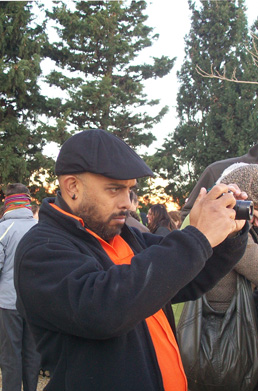Doung Anwar Jahangeer is Mauritian-born and has been living in South Africa since 1992. In 1993 he commenced his Bachelor of Architecture at the then University of Natal, Durban where he achieved merit awards in both Design and Construction.
After his first degree he embarked on a three-year travel across three continents. Whilst in London [UK] he worked as an architect focussing on the contemporary restoration of listed buildings. In 2000 he returned to do his post-graduate diploma and graduated in 2002. Consequently Doung conceptualised and implemented ‘The City Walk’ initiative, a way of directly observing the flux and mutability of his adopted city. ‘The City Walk’ initially starting with Durban now includes Johannesburg (SA), London (UK), Belo Horizonte (Brazil) and Malmo (Sweden). In 2004, he was a recipient of the KZNSA’s Young Artist Project (YAP). Later that year he started the ‘Streetlights initiative’, which is an ongoing collaboration with a community of street children (which he calls ‘streetlights’ in an attempt to shift negative perceptions of these homeless children/youth) of Hillbrow (Johannesburg) in the form of creative interventions in strategic public spaces of Johannesburg inner city.
Doung has also participated and exhibited in collaborative exhibitions and installations with artists both locally and abroad. This includes the Blind Spaces project Brazil/South Africa; Mari Mira France/South Africa; Hope Box Holland/ South Africa; Memories of Modernity Sweden/ South Africa and Ethiopia to set up the ‘Streetlight initiative’ there. He was part of Cascoland Joburg with his twenty First Century Shack installation in 2007.He also created and facilitated a new course for the third year architectural design students at Durban University of Technology (DUT).Due to the inherently conservative nature of the architectural profession, which tends to focus on the construction of walls that divide, rather than the space between that unites, he has found through the platform of contemporary art a space where he can explore his personal philosophy of an ‘architecture without walls’.



